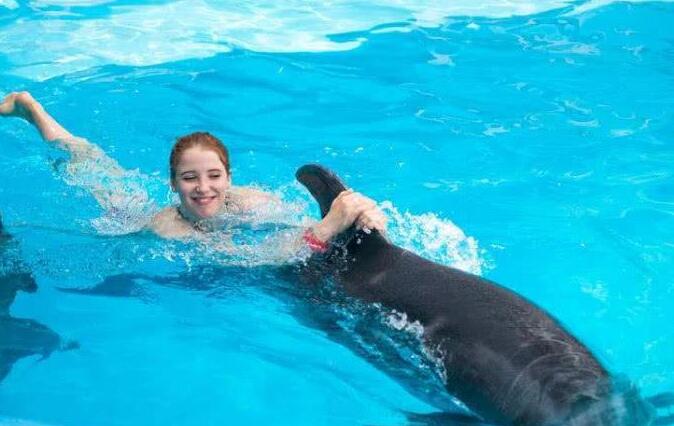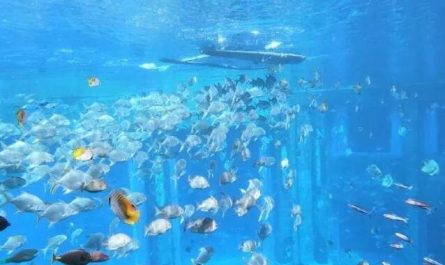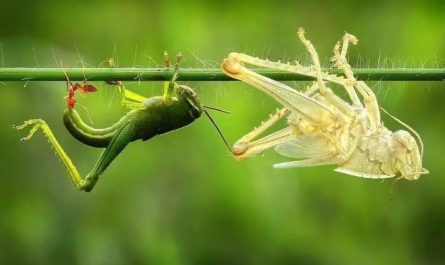Why dolphins will save people
Scientists mainly have the following three explanations for saving people by dolphins:
1. Take care of nature
The virtue of dolphins saving lives comes from the “nature of caring for their children”. As the basis of this instinct, it is an unconditional reflex. That is, whenever the head of the dolphin comes out of the water, it will automatically open the spray hole and complete the breathing action. Dolphins like to push floating objects on the sea surface. They often like to lift their newly born cubs out of the water, or lift up sick or injured companions. This “caring nature” of dolphins is not only manifested in the same kind, but also in other animals, and even in various inanimate objects, such as turtle corpses floating in the sea, wood, etc., also exhibit the same quirks. Therefore, once you encounter a drowning person, you may instinctively push it to the shore as a floating object, so that you can be saved.
2. Acting bravely
Many similarities between dolphins and humans have been talked about over the past few centuries. Dolphins are very clever and smart because they have a developed brain and a lot of ditch. The more ditch, the more developed the intelligence. The average brain weight of an adult dolphin is 1.6 kg, the average human brain weighs about 1.5 kg, and the average brain weight of an orangutan is less than 0.25 kg. In terms of absolute weight, dolphins rank first, but in terms of the ratio of brain weight to body weight, human brains account for 2.1% of body weight, dolphins account for 1.17%, and orangutans account for only 0.7%. Obviously, the dolphin is an animal with high intelligence, and its “feat” of saving lives is a conscious behavior. Because in most cases, dolphins push people to the shore instead of to the sea. Ingrid Wiesel, who has studied marine mammals for 14 years, said that there are many reports about dolphins protecting swimmers in the world. When dolphins may feel that humans are in danger, they will act immediately to protect them. Dolphins sometimes even “fight” with sharks to protect themselves and their cubs.
3. Playful
Dolphins are naturally active and good at imitating. What they love most is playing in the water. Therefore, everything that comes across becomes their toy. Why do dolphins push people to the shore instead of playing people in the water like toys? This is related to the habits of dolphins. Dolphins like to cruise back and forth in deep and shallow waters. If a person falls into the water in deep water, just when they encounter a group of dolphins guerrillating in shallow water, they will push the boat along the water and take the person half-push and half-play to the shallow water, or push the person who fell into the water to the shore. So why do dolphins protect those who fall into the water or swimmers from sharks? Because the “radar” of sharks is particularly sensitive, if the person falls into the water where the sharks are infested, the smell of the human body will quickly attract the sharks Come. If a group of dolphins happens to be frolicking about those who fall into the water, then the dolphins will think that sharks are coming to snatch their “toys” and fight with them. Dolphins and sharks are natural enemies. Although sharks are kings in the ocean, they generally act alone, while dolphins work in groups, and the sharks are naturally driven away.
Life habits of dolphins
Dolphins do not dive deep for long periods of time like other cetaceans. It is fast and has the characteristics of juggling.
Dolphin swimming is a unique swimming method of the dolphin family. The whole body jumps out of the water at a small angle and then enters the water at a small angle. This is one of the ways to distinguish dolphins from other cetaceans (the common situation of porpoises and other cetaceans) I would never swim in this way).
Dolphins swim fast, usually the fastest speed is around 30-40km/h, and individual species of dolphins can exceed 55km/h and can last for a long time. They are the long-distance swimming champions in the ocean.
Some dolphins are highly socialized species, living in large groups (sometimes composed of more than 100,000 individuals) and exhibiting many interesting collective behaviors. There are many ways to cooperate among members of the group. One example is that the dolphins in the group sometimes attack sharks and kill them by impact. Members will also collaborate to rescue injured or sick individuals. Groups of dolphins often follow boats and ride the waves, sometimes acrobatic jumps into the sky, the scene is magnificent.
It mainly feeds on fish and squid, among which killer whales also prey on mammals (such as whales, pinnipeds), birds and large fish. Like other toothed whales, dolphins rely on echolocation for predation and can even stun their prey with loud sounds.
How do dolphins reproduce
It takes about 5 years for female dolphins to become sexually mature and ovulate, but it will take a few more years before they are truly fertile. Once the male dolphins are mature, they will soak in the female dolphins all day, looking for their “love people”. Once in love, they will take lightning tactics and leave their hometown immediately after mating.
As a mammal, dolphins have many characteristics similar to humans. However, because dolphins live in the sea and are different from humans’ land environment, their birth methods are slightly different. Baby dolphins are born with the tail first, while human babies are born with the head first. It takes eleven months for female dolphins to give birth to baby dolphins.
When the female dolphin gives birth, she first bends her body into an arch, while struggling to swim forward, and greatly bend the tail. This lasts for nearly an hour, and the tip of the fetus’s tail lobe begins to appear. In two hours, the baby dolphin is born . Newborn baby dolphins weigh about 10 kilograms, accounting for 5% of the mother’s body weight and 45% of the mother’s body length. When the whole body of the young dolphins emerges from the female dolphins, the female dolphins and other female dolphins will help it to get to the surface to breathe the first breath, and then follow the female dolphins. When the female dolphins give birth in the water, other female dolphins gather to prevent the invasion of sharks and killer whales. After childbirth, when the mother dolphins are looking for food, the other dolphins take care of the newborn dolphins carefully and form a circle so that the dolphins can play safely.
Newborn dolphins feed mainly on the mother’s milk, so they have to follow the mother dolphins closely from birth until they are around three years old. After learning fishing and other survival skills, they will gradually move away from the mother dolphins and live with friends. .
The young dolphins draw milk from the nipples on both sides of the female dolphin’s genital opening. When breastfeeding, the mother dolphin always lifts her abdomen and tries her best to bring the nipple close to the mouth of the young pig, relying on the tube formed by the tongue of the young pig and the mother’s nipple, inject the milk into the young pig’s mouth, and the nipples on both sides alternately breastfeed. One year later, the weight of the young dolphins soared to 64 kg, and the body length was 0.6 to 0.7 meters.






